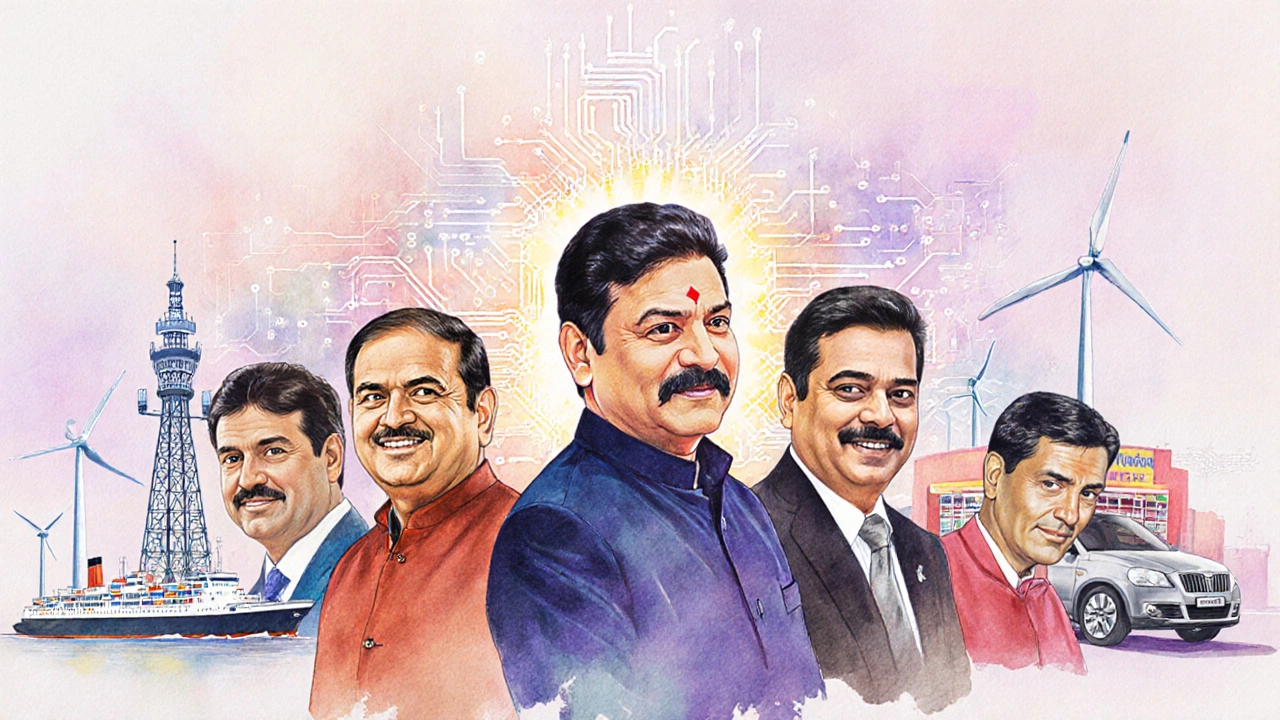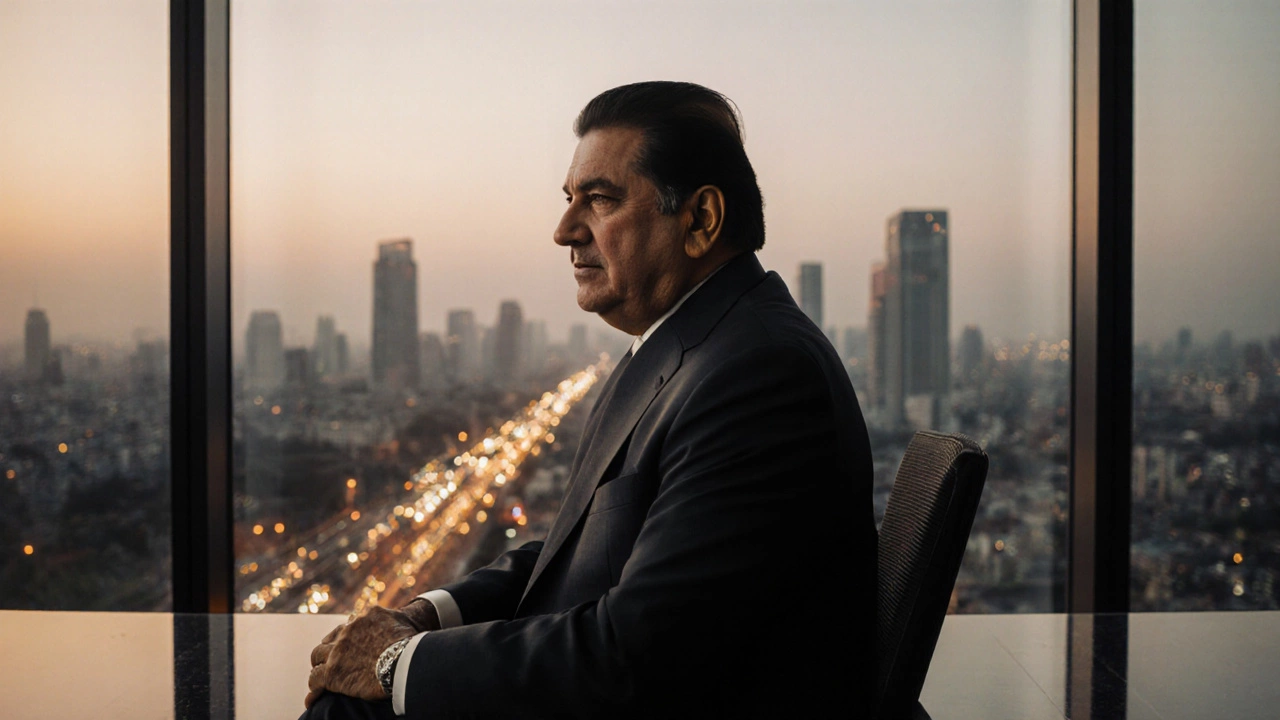India's richest person is the individual who holds the highest net worth among Indian citizens, typically measured by publicly reported assets, shareholdings and private holdings. As of October 2025, the title belongs to a well‑known industrialist whose empire spans telecom, retail, energy and media. Below we break down who that is, why the top 1% matters, and how the richest five shape the country’s economy.
Why the Top 1% Matters in India
India’s wealth gap has widened dramatically over the past decade. According to the Credit Suisse Global Wealth Report 2024, the top 1% of earners own about 42% of the nation’s total wealth. That concentration influences job creation, tax revenues and even public policy. Understanding who sits at the very top helps entrepreneurs gauge market opportunities and investors spot sectors with the strongest capital backing.
Defining the “Richest Person” Metric
Most rankings rely on three data points:
- Publicly listed shareholdings - easy to value on stock exchanges.
- Private company stakes - estimated using comparable public multiples.
- Other assets - real estate, art, yachts, etc., usually disclosed in annual billionaire lists.
For consistency, we follow the Forbes World’s Billionaires methodology, which updates net worth quarterly based on market fluctuations.
Who Holds the Crown in 2025?
The current India's richest person is Mukesh Ambani, Chairman of Reliance Industries Ltd. His net worth sits at roughly $97 billion, a slight dip from last year’s $99 billion but still far ahead of any competitor.
Ambani’s wealth stems primarily from:
- Reliance Jio - the telecom giant that commands over 45% of India’s data market.
- Reliance Retail - the country’s largest private‑label retailer, valued at $30 billion.
- Petrochemicals and refining - a legacy business that still generates billions annually.
Top 5 Richest Indians (2025)
Below is a snapshot of the five wealthiest individuals, their primary businesses and 2025 net‑worth estimates. Figures are rounded to the nearest billion dollars.
| Rank | Individual | Net Worth (USD bn) | Core Business | Key 2025 Move |
|---|---|---|---|---|
| 1 | Mukesh Ambani | 97 | Reliance Industries (telecom, retail, petrochem) | Expanded Jio Fibre to Tier‑3 towns |
| 2 | Gautam Adani | 85 | Adani Group (logistics, energy, ports) | Launched green hydrogen pilot |
| 3 | Shiv Nadar | 41 | HCL Technologies (IT services) | Acquired AI startup in Europe |
| 4 | Radhakishan Damani | 39 | D‑Mart (retail) | Opened 30 new stores in 2025 |
| 5 | Ratan Tata | 34 | Tata Group (conglomerate) | Finalized acquisition of UK automotive firm |

How These Tycoons Built Their Empires
Each of the top five followed a distinct path, yet common themes emerge:
- Sector timing: Ambani rode the mobile‑data boom, Adani capitalized on India’s infrastructure push, Nadar benefited from the software‑services surge.
- Diversification: Most kept a core business while expanding into adjacent markets-retail for Reliance, logistics for Adani, consumer finance for Tata.
- Capital access: All leveraged global debt markets or equity partnerships to fund large‑scale projects, keeping ownership while raising cash.
- Policy alignment: They timed investments with government initiatives like “Digital India”, “Make in India” and renewable‑energy targets.
Understanding these patterns helps budding entrepreneurs decide whether to build a niche play or aim for a multi‑industry platform.
Impact on the Indian Economy
Collectively, the top five contribute over $300 billion in assets, roughly 7% of India’s GDP. Their companies employ millions, indirectly support thousands of SMEs, and drive tax revenues upwards of ₹15 trillion annually. However, concentration also raises concerns about market dominance and wealth inequality, prompting the Finance Ministry to consider a wealth‑tax threshold for assets over ₹10 crore.
Quick Checklist: Verifying the Current Richest Person
- Check the latest Forbes billionaire list (updated quarterly).
- Review stock holdings of publicly listed entities (use NSE/BSE filings).
- Look for disclosures in annual reports of private groups (often in the “Ownership” section).
- Cross‑reference reputable Indian business magazines-Business Today, ET Wealth.
- Note currency fluctuations; a sharp rupee move can shift rankings.

Common Misconceptions
1. “The richest Indian is always the same person.” - Rankings have shifted. In 2022, Gautam Adani briefly overtook Ambani before the market corrected.
2. “Wealth comes solely from inheritance.” - While legacy plays a role, nearly 60% of the top 10 built their fortunes post‑1990s liberalisation.
3. “All billionaires are tech‑focused.” - Only two of the top five (Nadar and Ambani’s Jio) are primarily tech‑driven; the rest stem from energy, retail and manufacturing.
What the Future May Hold
Several forces could reshuffle the top‑1% list by 2030:
- Accelerated renewable‑energy adoption - leaders in clean tech could eclipse traditional oil‑based fortunes.
- Digital‑payment ecosystems - fintech giants may create billion‑dollar valuations faster than heavy‑industry firms.
- Policy reforms - a potential wealth tax or stricter antitrust enforcement could limit asset accumulation.
Keeping an eye on sector‑specific growth rates will help you anticipate who might rise next.
Takeaway for Aspiring Entrepreneurs
If you’re looking to break into the top‑1% one day, focus on three proven levers:
- Identify a high‑growth sector backed by government policy.
- Build a scalable platform that can diversify into related markets.
- Leverage external capital early to accelerate expansion without diluting vision.
Remember, the richest person didn’t get there by luck alone; they combined timing, diversification and relentless capital management.
Who is currently the richest person in India?
As of October 2025, Mukesh Ambani, the chairman of Reliance Industries Ltd., tops the list with an estimated net worth of about $97 billion.
How is net worth calculated for Indian billionaires?
Net worth combines publicly listed share values, estimated private‑company stakes (using comparable market multiples) and other disclosed assets such as real estate, yachts and art.
Why does the top 1% own such a large share of India’s wealth?
Rapid economic liberalisation, high‑margin sectors (telecom, energy, IT) and access to global capital have allowed a small group to accumulate wealth faster than the broader population.
Can the richest person’s rank change quickly?
Yes. Market volatility, currency swings or major corporate deals can shift rankings within weeks, as seen when Gautam Adani briefly overtook Ambani in 2022.
What sectors are likely to produce the next Indian billionaire?
Renewable energy, fintech, and AI‑driven health tech are the front‑runners, backed by supportive policies and global investor interest.

